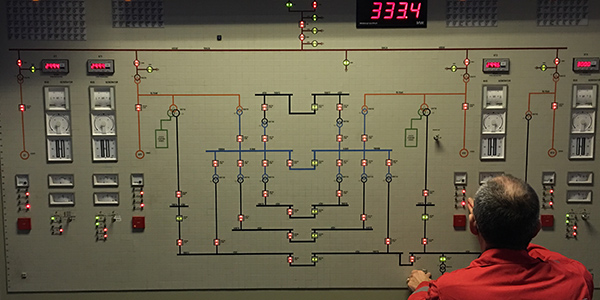Industry respondents criticized the team working on revisions to NERC’s standard for protection functions in automatic voltage regulators (AVR) for expanding the scope of the project beyond its initial mandate.
Comments on the proposed standard authorization request (SAR) for Project 2019-04 — modifications to reliability standard PRC-005-6 — opened June 2 and closed July 8. This is the second round of comments for the draft SAR; the first round opened in July 2019 and closed the following month.
The project was originally proposed in May 2019 by the North American Generator Forum (NAGF), which felt that the existing standard did not clearly explain its applicability to AVRs or prescribe appropriate maintenance activities for these devices. In the latest comment round, the SAR drafting team asked for comments on the following changes that it was considering:
- Should bulk electric system protective functions that respond to electrical quantities inside excitation systems and other BES element control systems be included in PRC-005?
- Does NERC’s current definition of “protection system” — which omits protective functions in the excitation and other control systems — create confusion concerning protective functions embedded in control systems?
- Should the PRC-005 standard provide for the use of emerging DC supply technologies, battery-based or non-battery-based, and ensure that they are subject to maintenance requirements?
- Is it reasonable for entities registered as under-frequency load shedding (UFLS)-only to be listed as applicable entities in the standard?
Entities Object to Scope Expansion
The scope of the changes took many respondents aback. Most notably, NAGF — despite submitting the original SAR — objected to what it characterized as an unwarranted expansion in the drafting team’s goals, particularly in their attempt to apply PRC-005 to control systems, for which it would be inappropriate.
“The updated SAR currently posted for comment appears to have expanded the scope significantly from the original wording of the NAGF SAR and evolved into a draft that the NAGF can no longer support,” NAGF’s Wayne Sipperly said in his comment on the first question. “NAGF requests that the SAR drafting team revert back to the original SAR as previously submitted … and limit this project to providing clear guidance on the scope and applicability of [AVR] protective functions on a synchronous generating unit with an installed digital AVR.”

Automatic voltage regulator
Sipperly’s comment was endorsed by a number of other industry representatives, as was his response to the second question. In that answer, he said that there was no chance that the definition of “protection system” could create confusion, unless it were extended to protective functions within control systems as the drafting team proposed.
Some respondents expressed more openness to the proposed expansion, though they were still uncertain about “vague” wording that created the chance of scope creep. Jennie Wike of Tacoma Public Utilities argued for unambiguous definitions of exactly which equipment was proposed for inclusion in the SAR.
“The protective functions should be limited to only those functions that impact the overall reliability and security of the BES,” Wike said.
Justification Falls Short, Commenters Say
Commenters also reacted with ambivalence to the proposal to set maintenance requirements for DC supply technologies as part of PRC-005. In a comment supported by several others, Edison Electric Institute’s Mark Gray said that he felt unable to support an expansion to the scope of the SAR without clear proof that the affected equipment were not covered by any existing standards.
“The description of the technology and industry need has not been adequately stated and explained in the SAR. It is also unclear how the current standard does not already address this technology,” Gray said. “Proposed changes to a reliability standard should clearly address any reliability gaps and other industry needs. … At this time, no justification has been provided nor has the increased scope been approved by the Standards Committee.”
On the final question regarding the extension of PRC-005 to cover UFLS-only entities, comments were generally supportive of including such utilities as consistent with other standards. The only significant objection came from Matthew Nutsch of Seattle City Light, who asked about “how many of these entities exist and how much impact … they have on the BES,” and whether their impact is great enough to justify the burden of requiring compliance with the standard. The potential compliance burden also weighed heavily in Nutsch’s overall reaction to the proposal.
“This SAR likely causes more burden than benefit to the protection and control of our BES assets,” Nutsch said. “If there is sufficient evidence to show that AVR trips are causing havoc across the interconnections, perhaps it is worth further consideration. However, as it is currently written, this SAR seems to add little value for the amount of effort it would entail to employ.”



